Kópavogur 作者: 来源: 发布时间:2021-09-30
一、所属省或是州,具体位置,人口,面积
Kópavogur is a town in Iceland that is the country's second largest municipality by population with 37,959 inhabitants. It has a total area of 80 square kilometers and lies immediately south of Reykjavík and is part of the Capital Region. The name literally means seal pup inlet. The town seal contains the profile of the church Kópavogskirkja with a seal pup underneath.
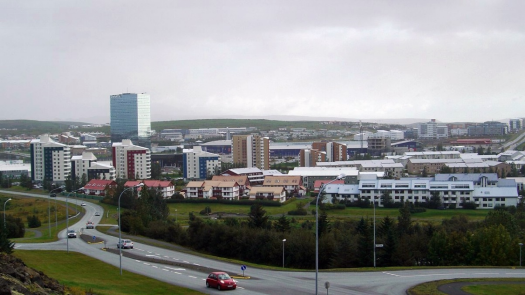
二、自然地理
1.地理条件
Kópavogsbær is a total of 80 km² in size and is in 65th place out of 76 municipalities in Iceland by size, ahead of Garðabær. The municipality is on three separate plots of land between Reykjavík, Garðabær and Mosfellsbær in the inner part of the Reykjanes peninsula. All settlements in Kópavogur are on the land bounded by Fossvogsdalur in the north, Breiðholt and Elliðavatn in the east and Garðabær in the south. The westernmost part of town is Kársneswhich lies between Kópavogur and Fossvogur. In the middle of the town is Kópavogsdalur and after it flows Kópavogslækur, which is often called Skítalækurinn where sewage was given to it in earlier years. Between Kópavogsdalur and Elliðavatn there are rounded woods and hills are prominent. These include place names such as Leirdal, Hnoðraholt and Rjúpnahæð. The first urban area in Kópavogur developed in Kársnes and Kópavogsháls, which runs in from Kársnes and separates Fossvogsdalur and Kópavogsdalur. In the past two decades, Kópavogur has developed from northwest to southeast towards Elliðavatn. At the bottom of Kópavogur valley are outdoor recreation areas and sports facilities, but on either side are densely populated residential and commercial areas. The undeveloped area of Kópavogur lies on the one hand on Sandskeiðir, west of Vífilfell, and on the other hand on Húsfellsbrun between Húsfell and Bláfjall. The ski area in Bláfjöll is in the land of Kópavogur.
Almost half of Kópavogur's land, or 37 km², is within Bláfjallafólkvangur. The area is in the Reykjanes eruption belt and there are various traces of volcanic activity, such as lava, craters and tuff formations. Lava from at least 15 volcanoes within the public square is partly within the boundaries of Kópavogur. In Þríhnúkagígur, south of the land of Kópavogur, there is a 120 meter deep crater that is the largest of its kind in Iceland and is considered by many to be one of the most significant natural formations in the country. Inside the bottom of the boiler is a 115 meter long cave. Þríhnúkagígur has been made accessible to the public through tunnels into it and there is a viewing platform. In addition, it is possible to descend into it.
2.交通情况
Kópavogsbær is a member of Strætó bs. which handles public transport in the town. The town's main bus interchange is in Hamraborg. There are both carriages that run around the town as well as carriages that connect the town to other municipalities in the capital area.
In Kópavogur, there is a walking and cycling path system that is part of the path system of the capital area. Among other things, there are paths in front of Kársnes, from the bottom of Kópavogur to Garðabær, through Kópavogsdalur and along the boundaries of Reykjavík and Kópavogur from Kópavogsdalur up to Kórahverfi.
三、经济发展和规模
The municipality's operating income in 2019 amounted to ISK 34,438 million. according to the income statement for parts A and B, but the budget provided for operating income in the amount of 33,710 m.kr. Operating income for Part A amounted to ISK 32,880 million, but the budget had assumed operating income in the amount of 32,084 m.kr. The operating result of the municipality according to the income statement of parts A and B was positive by 1,739 m.k.
Wages and salary-related expenses for Parts A and B during the year amounted to a total of ISK 18,159 million. The number on the payroll at the end of the year was 2,746, but the average number of full-time equivalents during the year was 1,968 with the exception of vocational schools and work contributions in committees. Salaries and salary-related expenses of the town council, town council and mayor amounted to 108 m.kr. during the year 2019.
There are no major fluctuations in operations when there are key figures compared between years. Wages and salary-related expenses in proportion to operating income has been around 50% in recent years, the lowest going to 46.2% in 2012. Next year, it is estimated that about 55% of operating income of the town go to the salaries and related expenses of employees, which can be attributed to large wage increases in recent quarters. Labor costs at the farm have been rising steadily and tight. It is estimated that wage costs will increase by 1,531 m.kr. between
years, which is a considerable increase that can mainly be attributed to a large wage increases due to wage agreements.
Tax revenue per capita has been growing between years and according to
submitted estimate, it can be assumed that they will be 759 thousand ISK. per capita next year.
https://www.kopavogur.is/is/stjornsysla/fjarmal-og-tolfraedi/arskyrslur-og-aaetlanir
四、产业特点重点项目
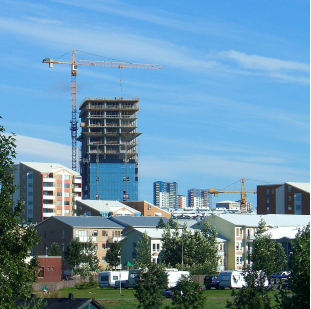
Development in South East Kópavogur
Towards the end of the 20th century and at the beginning of the 21st century, there was a lot of development in Kópavogur. In front was mainly a residential area in Kópavogur, but due to its location in the center of the capital area, there is also a lot of business and services in the town. There is the largest shopping center in the country, Smáralind, the tallest building in the country, Smáratorg 3 and extensive business activities.
At the same time, there was great growth in various industries and services in the town. At the end of the 1990s, the main industries in Kópavogur were the furniture industry, the food industry, the car dealership and general trade. Since the last decade of the 20th century, the population of Kópavogur has doubled and a large shopping and service district has sprung up in Kópavogsdalur. East of Reykjanesbraut there has been a lot of development and there have been residential areas named after Lindir, Sali, Kóra, Þing and Hvörf. Smáratorg was opened in 1997, Smáralind in 2001 and the 20-storey tower at Smáratorg 3 in 2008. In the 2006 election, Framsóknir's support fell, but the two parties managed to retain a majority.The economic crisis in Iceland 2008–2010 had had a considerable effect on development in Kópavogur. In the 2010 election, the majority of Sjálfstæðisflokkur and Framsóknir fell and the majority of Samfylkingur, Vinstri Grænna, Næstbesta party and the Y-list of Kópavogur residents were formed.
五、风景名胜,景点( attractions)
1. Kópavogur Church
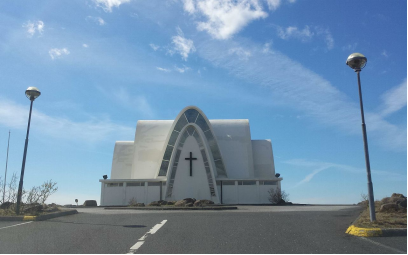
Kópavogur Church is the oldest church in Kópavogur. It stands in Borgarholt in the western part of Kópavogur, often called Kirkjuholt by the inhabitants. The church was built between 1958 and 1962. Its foundation was consecrated on August 16, 1958, and the Bishop of Iceland laid the cornerstone for the church on November 20, 1959. Sigurbjörn Einarsson, the then bishop of Iceland, consecrated the church on December 16, 1963.
The first parish priest of Kópavogur Church was Gunnar Árnason who worked from 1962-1971. In 1971, Árni Pálsson and Þorbergur Kristjánsson started working. Árni retired in 1990 and Þorbergur in 1994. Ægir Fr. Sigurgeirsson was a parish priest from 1990 to 2009, when Sigurður Arnarsson took over as parish priest. Three priests have been appointed parish priests at Kópavogur Church for a short time, Lárus Halldórsson for 3 months 1971, Guðmundur Örn Ragnarsson for half a year 1985-1986 and Guðni Þór Ólafsson 1999-2000.
2. Gerðarsafn - Kópavogur Art Museum
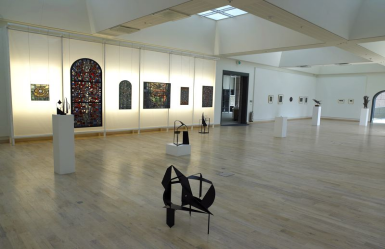
Gerðarsafn is a progressive museum with an emphasis on modern and contemporary art, located in the heart of Kópavogur. Gerðarsafn offers temporary exhibitions with works by Icelandic and international contemporary artists as well as displaying the museum collection. The exhibition program echoes the museum‘s status as the only Icelandic museum built in honor of a female artist.
The museum was built in memory of artist Gerður Helgadóttir (1928-1975) and opened in 1994. Gerður Helgadóttir was a pioneer of three-dimensional abstract art and glass art in Iceland. The museum collection holds over fourteen hundred works by Gerður Helgadóttir and a large collection of works by the 20th century artists Barbara Árnason, Magnús Á. Árnason and Valgerður Briem among works by various contemporary artists.
https://visitreykjavik.is/gerdarsafn-kopavogur-art-museum
3. Kópavogur Public Library
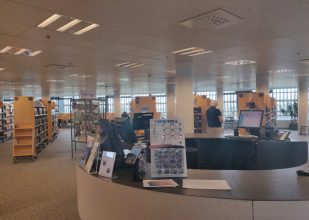
The Kópavogur Public Library consists of two branches. The main branch at Hamraborg 6a and the Lindasafn branch at Núpalind 7. The two branches share the same vision: to provide an attractive space where guests enjoy spending time, browsing the collection and attending various events.
There are three computers available for the use of our guests at the main library, as well as a free wi-fi connection. It is possible to print A4 sheets at the library for a small fee.
The annual fee for library membership is 2000 ISK. Children under the age of 18 are exempt from those fees, as are those aged 67 or older and people with disabilities. The card can be used at both branches in Kópavogur, both branches in Garðabær and the Hafnarfjörður Public Library. The annual fee also gives patrons an access to the Icelandic Online Library, Rafbókasafnið, where it is possible to check out both audio books and e-books.
https://visitreykjavik.is/kopavogur-public-library
六、历史文化
1.历史
The oldest signs of settlement in the land of Kópavogur are in the bottom of Kópavogur, north of the mouth of Kópavogslækur, where a ground house was found that is believed to date from the 9th century. Other ancient settlements in the land of Kópavogur are Digranes, Hvammur (later Hvammskot and Fífuhvammur) and Vatnsendi. The first written record of residence at Vatnsenda dates from 1234 and the name Kópavogur first appears in sources in 1523. At Þingsnes by Lake Elliðavatn there is a large ruin area, 6,000-7,000 m in size, which has attracted much archaeologists' attention. It is even believed to be the ancient Kjalarnesþing, but the oldest ruins in the area are from the 10th century. Kópavogsþing was located at Þinghóll at the bottom of the scale, but Bessastaðir was an important place in the 17th century and therefore the need for a nearby parliamentary seat. Icelanders wanted a parliamentary seat outside the land of Bessastaðir, so Kópavogur was chosen. According to sources, it appears to have been a rather large parliament, and in the 16th century there were ideas to move the Althingi there, although this never happened. The legacy celebration in 1662, often called the Kópavogur meeting, took place at the Kópavogur parliament. The meeting was held to get Icelanders to accept the Danish monarchy's hereditary monarchy. This meant that all state power came into his hands. In the Icelandic independence struggleGenetic homage was used as an example of Danish aggression against Icelanders throughout history.
2. 文化体育
Most of Kópavogur's cultural institutions are located in Borgarholt. Lestrarfélag Kópavogs was founded in 1953 on the basis of Jón úr Vör. Kópavogur Library is now housed in Safnahús Kópavogur with a branch in Lindaskóli. In 2007, there were 212,060 loans from the museum. Náttúrufræðistofa Kópavogs, Tónlistarskóli Kópavogs og Salurinn are also housed in Safnahúsið. The hall was one of the largest concert halls in Iceland before the Harpa music hall was built and seats about 300 people. Gerðarsafn is an art museum housed in Hamraborg, in the immediate vicinity of the Museum. It was opened in April 1994 and is named after sculptor Gerður Helgadóttir. The Kópavogur District Archives was opened in 2001 and is located in Hamraborg. It handles the mandate of the National Archives in Kópavogur. In collaboration with Héraðsskjalasafnið, Sögufélag Kópavogs operates, founded in 2011. Leikfélag Kópavogs was founded in 1957 and was well housed in Félagsheimil Kópavogur for a long time. The Kópavogur School Orchestra was formed in 1966. It is divided into three ensembles according to age and ability, which perform on average 90 times a year.
There are four churches in Kópavogur. Kópavogur Church, which was consecrated in 1962, is one of Kópavogur's main landmarks and a simplified image of the church appears in the town's logo. The town has two swimming pools and numerous public parks and outdoor recreation areas, such as in Kópavogsdalur, Fossvogsdalur and by Elliðavatn. Two local newspapers are published in Kópavogur, Kópavogspósturinn and Kópavogsblaðið.
七、其他信息
Kópavogur is one of the youngest towns in Iceland so there is not much there of historical significance. It was a suburb of Reykjavík with the first houses built during World War II. Explosive growth in business and housing building doubled the town in size since 1990, giving it large shopping centers and an office/commercial building that is the tallest building in Iceland. The things to see are primarily in the older part of the town, particularly the Kársnes peninsula with trees in the gardens and treelined streets and the picturesque church on top of the Borgarholt.
八、联系方式
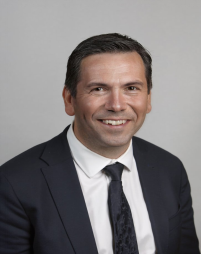
Mayor: Ármann Kr. Ólafsson
Telephone: 441 0000
Email: kopavogur@kopavogur.is
https://www.kopavogur.is/is/stjornsysla/baejarstjorn/baejarstjori-1
